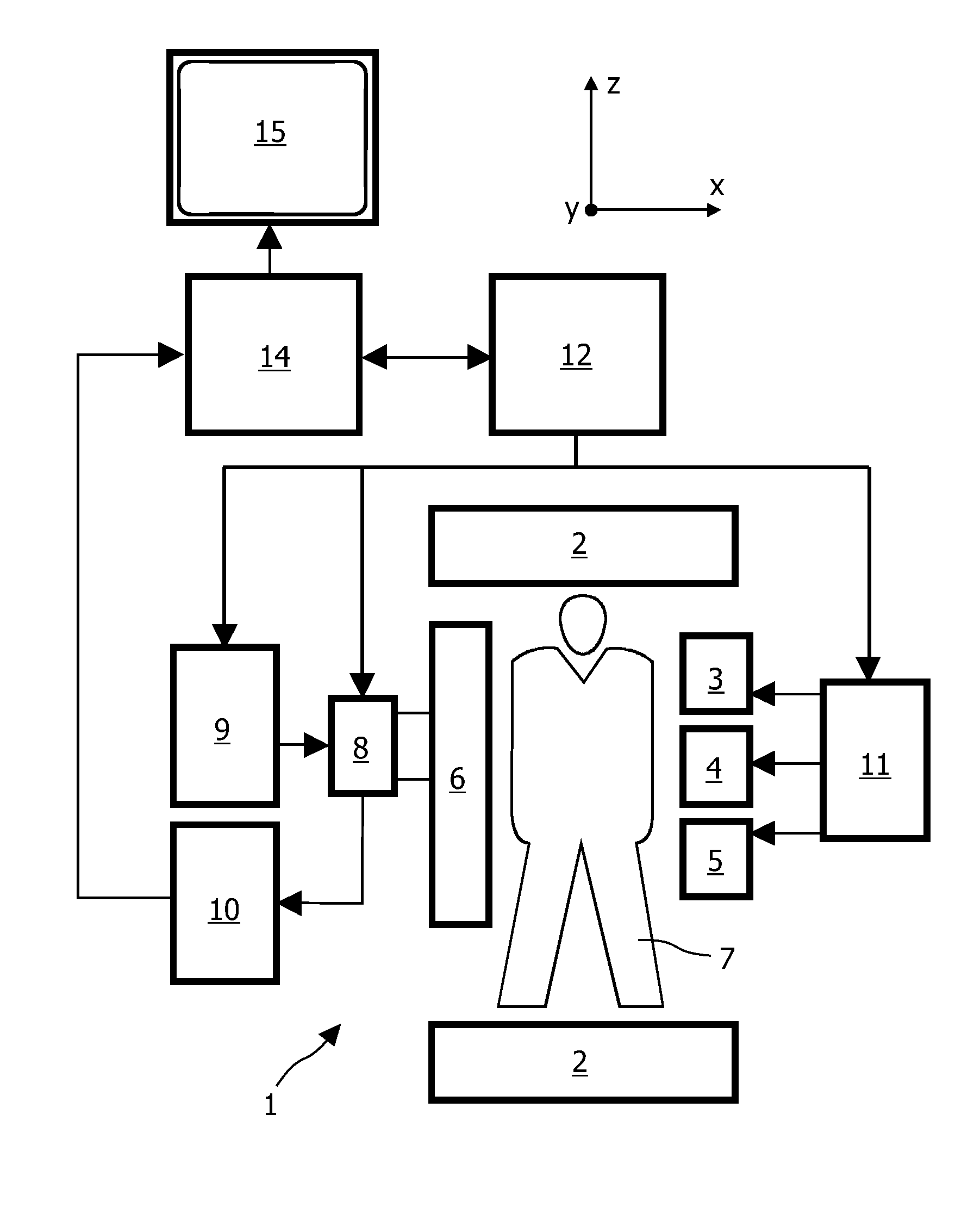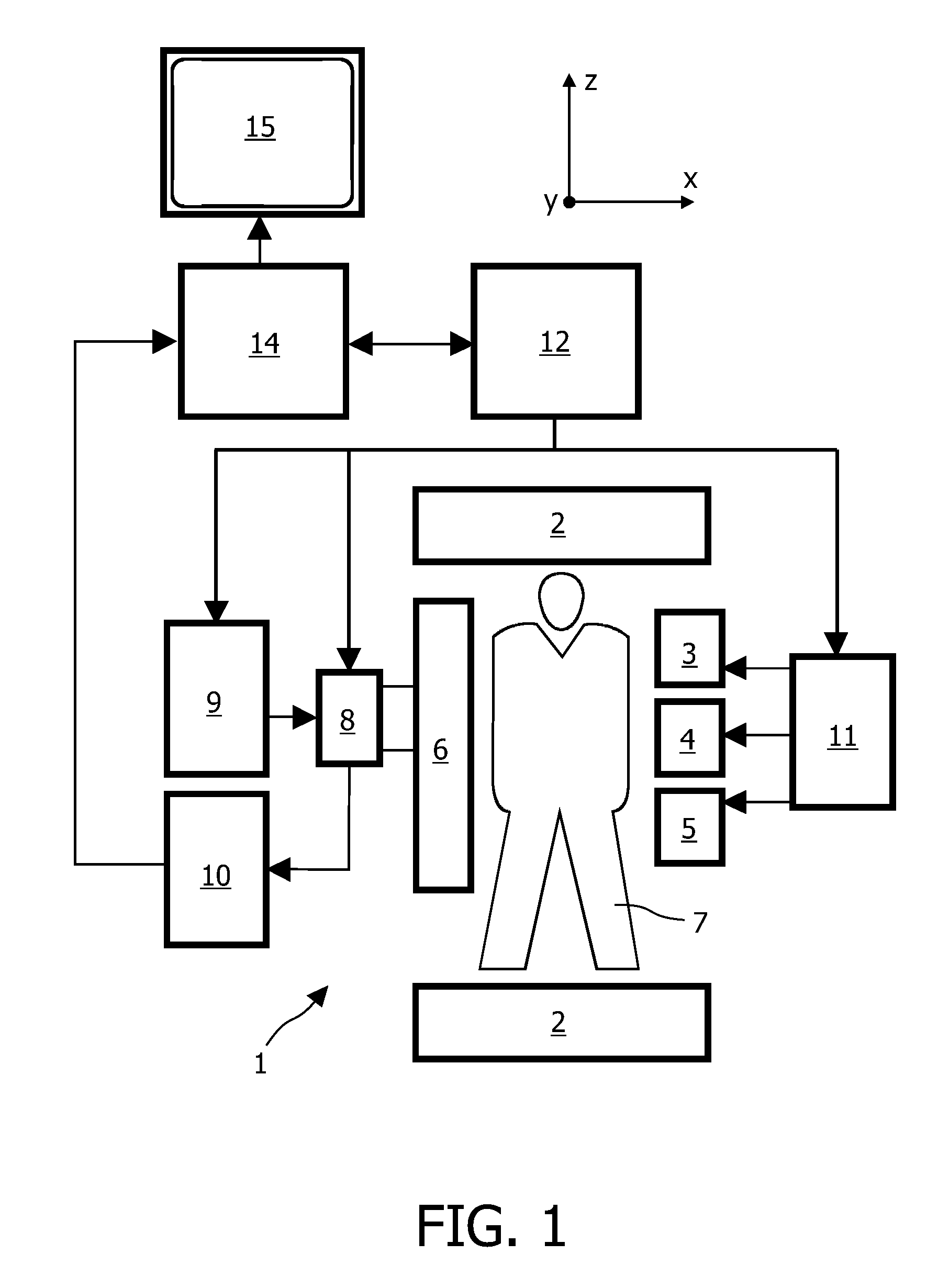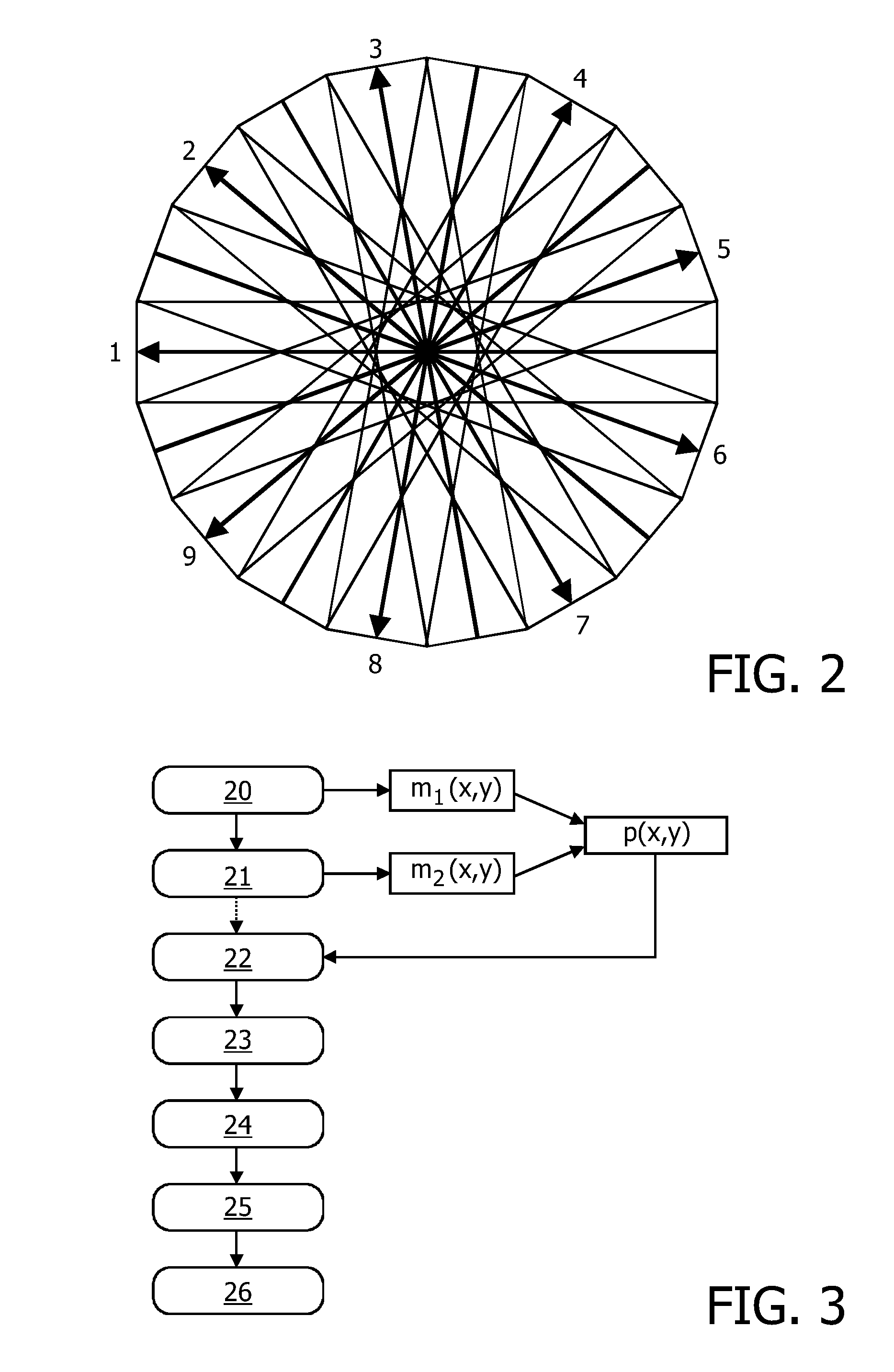PROPELLER MRI with phase correction
a phase correction and propeller technology, applied in the field of magnetic resonance imaging devices, can solve the problems of mainly lost phase information general not exactly true, and inability to accurately detect the phase errors of the acquired mr signals in image space, so as to avoid image artifacts and reduce image artifacts.
- Summary
- Abstract
- Description
- Claims
- Application Information
AI Technical Summary
Benefits of technology
Problems solved by technology
Method used
Image
Examples
Embodiment Construction
[0030]In FIG. 1 an MRI device 1 in accordance with the present invention is shown as a block diagram. The apparatus 1 comprises a set of main magnetic coils 2 for generating a stationary and homogeneous main magnetic field and three sets of gradient coils 3, 4 and 5 for superimposing additional magnetic fields with controllable strength and having a gradient in a selected direction. Conventionally, the direction of the main magnetic field is labelled the z-direction, the two directions perpendicular thereto the x- and y-directions. The gradient coils 3, 4 and 5 are energized via a power supply 11. The imaging device 1 further comprises an RF transmit antenna 6 for emitting RF pulses to a body 7. The antenna 6 is coupled to a modulator 9 for generating and modulating the RF pulses. Also provided is a receiver for receiving the MR signals, the receiver can be identical to the transmit antenna 6 or be separate. If the transmit antenna 6 and receiver are physically the same antenna as s...
PUM
 Login to View More
Login to View More Abstract
Description
Claims
Application Information
 Login to View More
Login to View More - R&D
- Intellectual Property
- Life Sciences
- Materials
- Tech Scout
- Unparalleled Data Quality
- Higher Quality Content
- 60% Fewer Hallucinations
Browse by: Latest US Patents, China's latest patents, Technical Efficacy Thesaurus, Application Domain, Technology Topic, Popular Technical Reports.
© 2025 PatSnap. All rights reserved.Legal|Privacy policy|Modern Slavery Act Transparency Statement|Sitemap|About US| Contact US: help@patsnap.com



